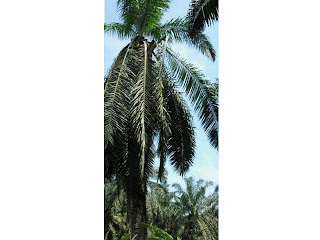Hyperspectral remote sensing could be used to detect early Ganoderma disease infestation in oil palm plantation. The demage extensiveness of the inner part oil palm trunk can be verified and imaging by using sonic tomography detector. The AeroGANO System is being developed by a private company "AEROSCAN PRECISION (M)SDN BHD" (source:laili,2010)
AeroGano System

Early Detection and mapping ganoderma disease in oil palm plantation
Subscribe to:
Post Comments (Atom)
GANODERMA
What is Ganoderma disease?
The Ganoderma Basal Stem Rot (BSR) disease is caused by bracket fungus Ganoderma. It is lethal and incurable for more than 50 years now. During replanting, if the old oil palm trunks are left to rot on the ground, various fruiting bodies of Ganoderma may be produced and thrive. Ganoderma Basal Stem Rot (BSR) is fast becoming a major threat to oil palm cultivation and palm oil production countries.
It has also been reported that the disease is present in more than 53% of the oil palm plantations in Peninsular Malaysia. Without treatment, more than 80% of the affected plants may die by the time they reach less than halfway through their lifespan. The losses can amount to a reduction of 25% to 45% yield in fresh fruit bunches.
The Ganoderma Basal Stem Rot (BSR) disease is caused by bracket fungus Ganoderma. It is lethal and incurable for more than 50 years now. During replanting, if the old oil palm trunks are left to rot on the ground, various fruiting bodies of Ganoderma may be produced and thrive. Ganoderma Basal Stem Rot (BSR) is fast becoming a major threat to oil palm cultivation and palm oil production countries.
It has also been reported that the disease is present in more than 53% of the oil palm plantations in Peninsular Malaysia. Without treatment, more than 80% of the affected plants may die by the time they reach less than halfway through their lifespan. The losses can amount to a reduction of 25% to 45% yield in fresh fruit bunches.
APPLICATIONS REMOTE SENSING

- LAILI NORDIN
- Kuala Lumpur, WP KUALA LUMPUR, Malaysia
- Graduated from UPM (Diploma Agric);Iowa State University (B.Sc.Agronomy);NWMissouri State University(M.Sc. Soil Conservation);UKM (PhD. Geography-Remote Sensing). Working experience: A-Department of Agriculture (a-Soil Management Division; b-Crop proctection Division--Beekeeping); and B- Malaysian Centre For Remote Sensing-- Application Remote Sensing)
Hyperspectral Remote Sensing
Hyperspectral remote sensing data used in the Ganoderma mapping is quite a new technology. It is also known as imaging spectroscopy. It is being used by scientists to the detection and identification of minerals, terrestial vegetation, and man-made materials and backgrounds.
Hyperspectral remote sensing combines imaging and spectroscopy in a single system which often includes large data sets and require new processing methods. Hyperspectral data sets are generally composed of about 100 to 200 spectral bands of relatively narrow bandwidths (5-10 nm), whereas, multispectral data sets are usually composed of about 5 to 10 bands of relatively large bandwidths (70-400 nm).

This comment has been removed by the author.
ReplyDeleteOil palm plantation should contact Laili Nordin (0133949059)for presentation
ReplyDeleteHi! Has anybody found an effective fungicide to control Ganoderma disease in oil palm plantation, either in Malaysia or Indonesia?
ReplyDeleteWe are using Sinergizer (Booster) to strengthen Oil Palm Tree resilience against decease. We are not using a fungicide to cure the decease.
DeleteStrengthen Oil Palm Tree means sufficient Nutrition for the Tree.
Call me if need help.
Cairul Nadzim, Puchong Selangor. 016-2636001